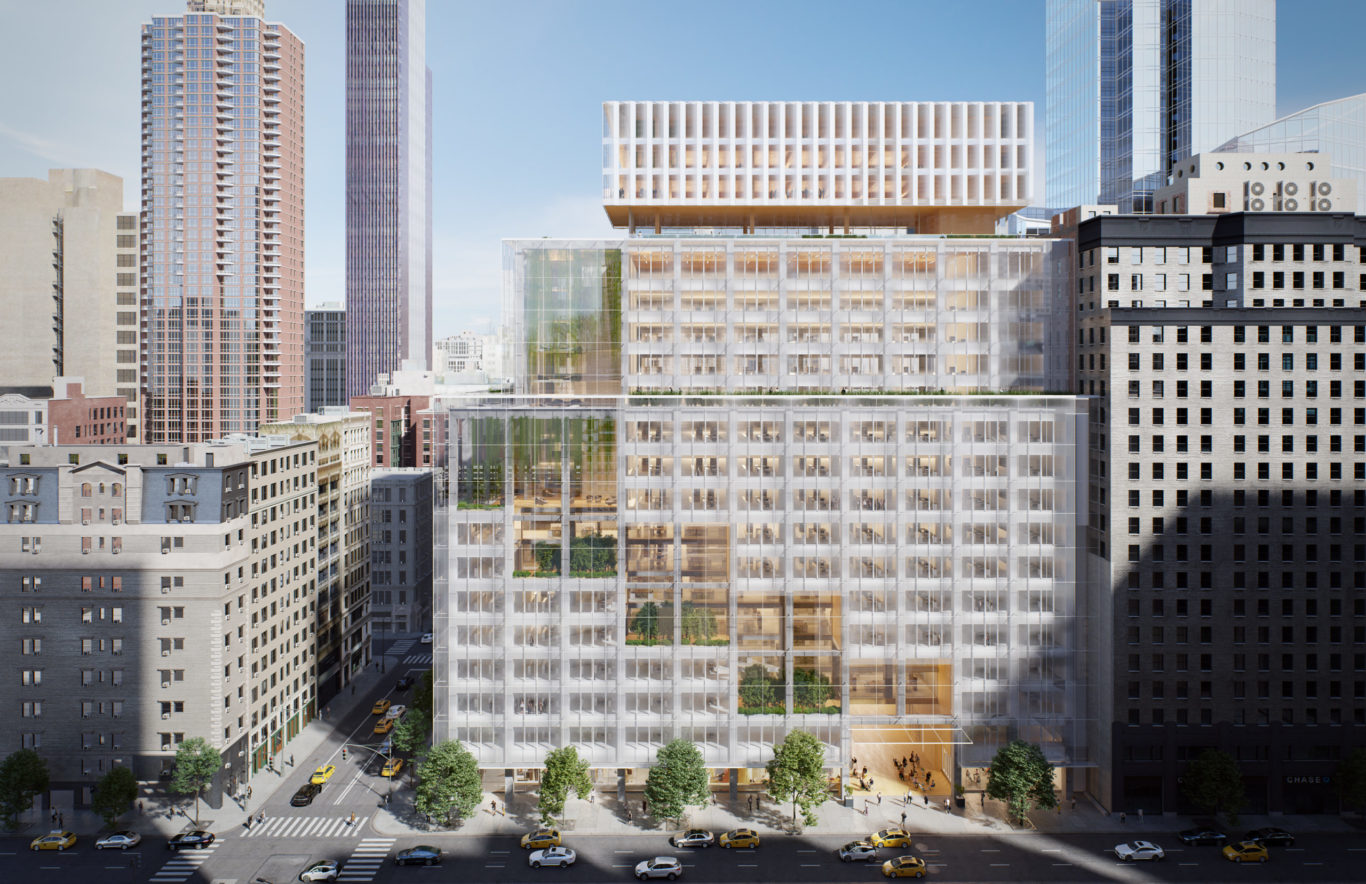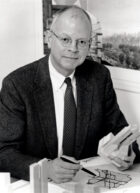63 Madison is an aging 1960s Midtown office tower, typical of the buildings that will need retrofitting under New York City’s new climate legislation. In early 2020, an ideas competition was held to explore ways to improve the building’s environmental performance and functionality. SOM developed a proposal with applicability for many such buildings: a bold, innovative, and transferable solution to the challenge of transforming both its spaces and energy efficiency. The design retains the building’s existing single-pane facade system and 93 percent of the overall structure, and wraps it in a lightweight thermal veil, while creating new garden terraces and premium offices.

The challenge: Old buildings, new emissions standards
In May 2019, New York City enacted the Climate Mobilization Act, which includes Local Law 97. The legislation limits greenhouse gas emissions by New York City buildings of more than 25,000 square feet, and applies to commercial and residential properties, both new and existing. Affecting approximately 50,000 buildings, the law is designed to cut emissions by 80 percent by 2050. New solutions are urgently needed to replace the single-glazed walls that the city’s older office buildings often employ.
In 2020, the Ornamental Metal Institute of New York sponsored a design competition seeking forward-thinking, sustainable design solutions for 63 Madison Avenue, a 1962 office building which must reduce its carbon emissions by half by 2030 to comply with the city’s impending laws. The competition sought proposals that would dramatically reduce greenhouse gas emissions and provide the highest quality workplace and amenities, while addressing embodied and operational carbon reduction, construction and financial viability.

The solution: Retain, carve, plant, add, and wrap
SOM’s proposal, developed with engineering firm Werner Sobek and sustainability consultant Atelier Ten, was one of six finalists. First, the design retains the existing facade. This avoids generating the embodied carbon associated with new construction and recladding, and utilizes 93 percent of the existing structure. Next, the design brings daylight into the deep floor plates by carving new openings in the facades, primarily on the south and west elevations. This dramatically increases the area of naturally-lit workspace for creative office tenants and creates unique interior-exterior terraces. The removed floor area is then added to the roof of the building to create panoramic new premium office space. Finally, the entire existing building is wrapped in a lightweight “veil” to create a high-performance, double-skin facade. This avoids drastically increasing the building’s embodied carbon, reduces energy demands, and makes the project flexible and financially viable for potential tenants and owners.

The glass veil
SOM’s proposal centers on reusing, rather than demolishing, the existing curtain wall. To achieve the 70 percent reduction in operating carbon necessary to meet the city’s upcoming emissions standards, the single-glazed facade is wrapped in an extremely lightweight, thermally-efficient glass veil. This creates a high-performance double-skin facade. The cavity between the existing curtain wall and the veil is ventilated at the top and bottom, reducing heat loss and infiltration and producing significant energy savings.
The solution takes advantage of technological advances in glass, and uses eight-millimeter-thick vacuum-insulated glazing—far thinner than conventionally insulated glass units—to create an extremely lightweight enclosure. A chromium-based coating on the exterior of the glass provides radiation selection in the summer, and a low-emission coating on the interior maximizes heat retention in the winter. The vacuum-insulated glass panels are then suspended from the existing structure by a frameless support system utilizing structurally-optimized titanium “comb” fittings. This combination of thin, high-performing insulated glazing with an extremely minimal frameless support system enables the highest possible thermal performance and appears as a contemporary, lightweight, chromatic veil.

Environmentally and economically sustainable
While adding to the facade helps to reduce the building’s carbon emissions and energy demands, carving into the building opens the existing floor plate to daylight and creates new garden terraces. These amenity spaces climb up the exterior, as if to bring the nearby Madison Square Park up through the building. Where the existing floor plate and facade have been removed, the building is stripped down to its existing structure, juxtaposing its concrete beams and columns with the technologically advanced glass veil.
Remaining within the allowable square footage and the existing zoning envelope, the proposal adds this carved-out floor area to the roof of the building, creating 50,000 square feet of new, high-performance office space and an additional roof terrace. This addition, together with the value of the new terraces and improved floor plates, pays for the deep retrofits necessary to reduce overall emissions. The proposal is a powerful example of what an architecture of sustainability might look like. It functions as a prototype, with applicability for a building type prevalent across American cities—in this way, New York City’s ambitious legislation is helping to catalyze a global effort toward a more sustainable world.



